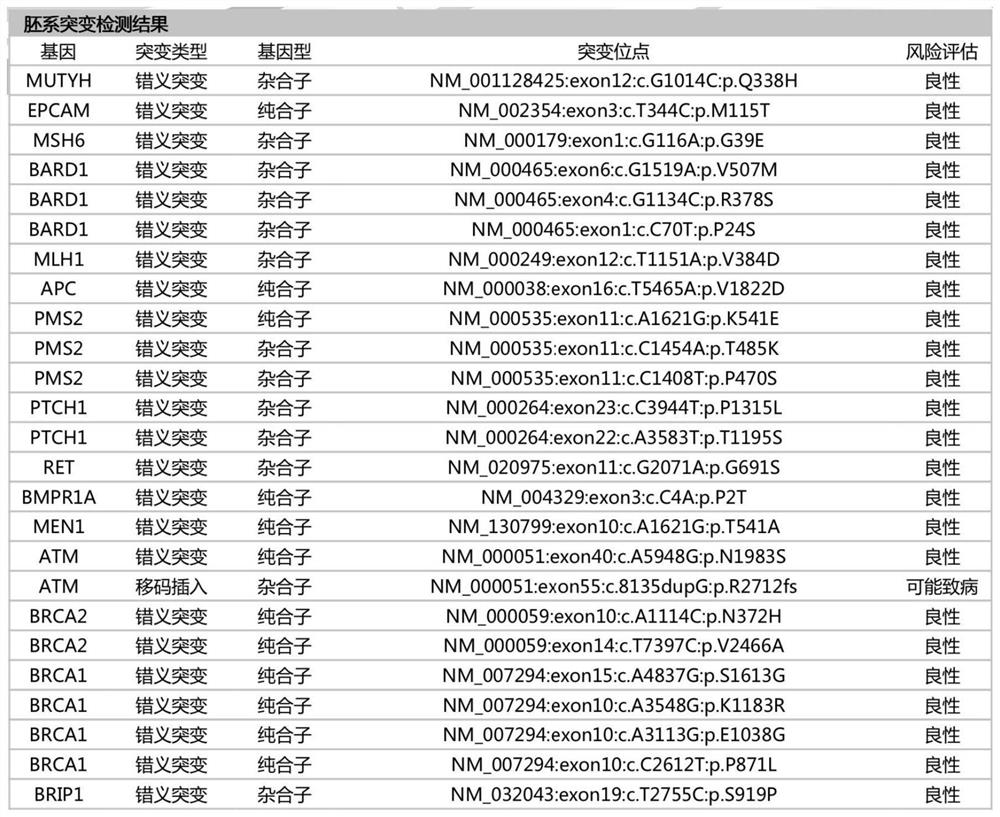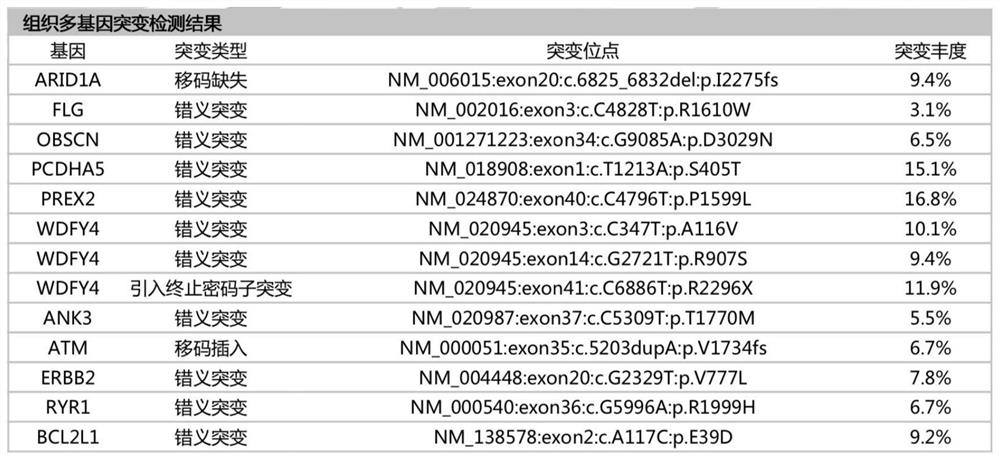Liver cancer detection panel based on next-generation sequencing technology, kit and application of panel
A second-generation sequencing technology and detection kit technology, applied in the field of liver cancer detection panels and kits, can solve problems such as differences and achieve the effect of reducing costs
- Summary
- Abstract
- Description
- Claims
- Application Information
AI Technical Summary
Problems solved by technology
Method used
Image
Examples
Embodiment
[0031] Step 1. Take a patient's cancer tissue and blood samples to extract DNA. The kits used are TIANGENTGuide Cells / Tissue Genomic DNA Kit and TIANGENT TGuide Large Volume BloodGenomic DNA Kit (1-3ml).
[0032] Step 2, DNA sample library preparation. First use the Bioruptor UCD-300 non-contact automatic ultrasonic breaker to randomly interrupt the DNA, ctDNA does not need this step. Take 400ng of DNA, dilute it to 50μl with nuclease-free water, transfer it to a 0.5mL Eppendorf LoBind Tube, mix well, centrifuge briefly and put it on ice for use. Place the sample: Place the centrifuge tubes symmetrically (if there is a single tube, add water to the empty tube to balance), tighten the rotor, place it on the ice box, and pre-cool for 1-2 minutes. 150-200bp ultrasonic break. Repeat the previous step of ultrasonic crushing, a total of 9 cycles, and end in about 90 minutes. The library was then prepared using the KAPA library construction kit.
[0033] Step 3, RNA probe prepara...
PUM
 Login to View More
Login to View More Abstract
Description
Claims
Application Information
 Login to View More
Login to View More - R&D
- Intellectual Property
- Life Sciences
- Materials
- Tech Scout
- Unparalleled Data Quality
- Higher Quality Content
- 60% Fewer Hallucinations
Browse by: Latest US Patents, China's latest patents, Technical Efficacy Thesaurus, Application Domain, Technology Topic, Popular Technical Reports.
© 2025 PatSnap. All rights reserved.Legal|Privacy policy|Modern Slavery Act Transparency Statement|Sitemap|About US| Contact US: help@patsnap.com



